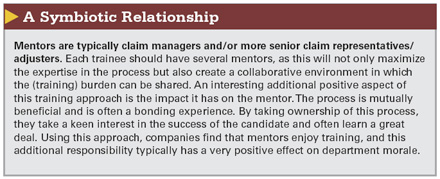 Succession planning is a phrase that is often used in the business press these days. Most commonly, it refers to the need to prepare for the orderly transition of duties in the executive suites of major companies. However, the phrase can also apply to the need to prepare for major demographic shifts in the workplace.
Succession planning is a phrase that is often used in the business press these days. Most commonly, it refers to the need to prepare for the orderly transition of duties in the executive suites of major companies. However, the phrase can also apply to the need to prepare for major demographic shifts in the workplace.
Boomers Nearing Retirement
One such major demographic trend facing U.S. companies is the impending loss of millions of Baby Boomers from the workforce as they transition into retirement over the next 10 to 15 years. From skilled factory jobs to banking and insurance, this exodus will affect almost every industry.
While the 2008/2009 financial crisis and recession may delay retirement for some, eventually these workers will leave the workforce. The Baby Boomer generation includes those born between 1946 and 1964 and is the largest demographic group in the U.S. population. The oldest members of this generation are now 63; the youngest are 45. There is no question that the workforce 10 years from now will be much different than the one today.
Based on discussions with many executives and claim managers, there is no doubt that the profession will be significantly impacted by this demographic shift. Many companies face a significant loss of brainpower that will not be able to be replaced with current staff. To determine how to respond to this phenomenon, it is useful to figure out how we arrived at the current point.
Historical Hiring Trends
A four-year college degree is generally a prerequisite for an entry-level claim position at many companies. As a result, for the purposes of this article, the phrase “entry-level hiring” refers to recruiting recent college grads to fill claim positions.
One uniform message from industry experts is that inconsistent entry-level hiring over the past 20 to 25 years has caused a huge void. There is a shortage of talent ready to take the reigns from the Baby Boomers nearing retirement. The main reason is the cyclical nature of the industry, as well as its intermittent “hard” and “soft” markets.
College recruiting for claim positions can also be problematic for a variety of reasons. Claims is not a centralized function; claim personnel need to be located across the country. Consequently, it is difficult to implement an efficient college recruiting program to identify candidates in 25 to 50 or more locations. Further, centralized recruiting and training programs (requiring eventual relocation) have proven to be difficult to manage logistically.
Another key problem facing claims is that very few college programs offer a curriculum in claims. Unlike actuarial sciences or even underwriting, there are probably few (if any) college students that graduate actively seeking a career in claims. Unfortunately, the profession does not rank high on the list of target opportunities in most college career counseling centers.
Because of these aspects, claim managers have had a strong preference for prior claim experience or experience in a closely related sector when hiring. Moving forward, the problem with this approach is that there will likely be a shortage of good people available to fill anticipated openings created by retirement, normal attrition, and future growth. This could lead to a “musical chairs” phenomenon by which there is much movement of people between companies. With a supply-demand imbalance, one can expect compensation costs to increase appreciably.
A Succession Planning Strategy
In preparing for the future, it can be useful to look at sports analogies. In professional football, like many professional sports in the era of free agency, teams often see 50 percent or more turnover in personnel from one year to the next. We encourage managers to think of themselves as the general manager (GM) of their favorite football team.
In dealing with roster openings, GMs look to free agents, draft choices, and un-drafted college players. Every year, GMs sign key free agents first and then augment their rosters with new college players. Financially, no team would be viable for very long if they relied on free agents for all of their roster openings.
Claim managers can use this strategy to ensure the right blend of talent for the future. They need to be opportunistic in hiring strong experienced people who become available in the market (free agents). In addition, they need to hire the qualified college grads (draft choices) that can be groomed for the future. This can provide long-term continuity and help control overall compensation costs.
An Entry-Level Hiring Approach
A comprehensive plan begins with developing projections of anticipated future attrition, augmented by expected growth. Attrition includes both retirement losses and normal turnover. Hiring plans are then made based on specific anticipated openings. Top priority is given to key losses due to retirement, which may be replaced through promotion or hiring from outside the organization. Ultimately, an estimate is made for entry-level hires, which should be relatively consistent from year-to-year.
Research indicates that companies that have implemented a structured plan assemble stronger teams with a broader array of talents, skills, and capabilities. Further, implementing a coordinated plan — including consistent college hiring — has allowed companies to control compensation costs to a larger extent (or even to reduce these costs by as much as 10 to 20 percent) while enhancing claim department performance.
Prior to even screening resumes, a company must first define what it is looking for to be successful in entry-level hiring. But without experience from which to probe, most managers are at a loss as to how to determine what constitutes a good candidate.
When asked what attributes or traits set their star performers apart, claim managers seldom talk about experience, regardless of the level of position. Most commonly, they mention great communication and organizational skills; the ability to stay calm in stressful situations; strong interpersonal skills; and attention to detail.
The goal then is to first develop a profile of the ideal candidate and then a process to identify candidates that match the profile. In addition to core attributes, it is important that your profile also assess how candidates should mesh with your unique culture and environment.
In summary, if you identify candidates that match the profile required for success, then the candidate should perform well in the position, enjoy the work, and — most likely — be there for the long-term. The basis of this hiring approach is behavioral science, which has helped make hiring (especially entry-level hiring) much more predictable.
Interview and Recruit
With the candidate profile developed, the interviewing technique employed should then facilitate accurately determining if the prospects being interviewed have the skills and attributes that are critical to success in the position. In addition to a skill assessment, the interview should include a career exploration to ensure that the candidate's career goals are consistent with a career in claims.
A claim trainee position is a great entry-level job for many new college grads. The problem is how to find candidates with the skills and attributes required for success. This is not as easy as it sounds, as many qualified grads have neither considered nor researched a career in claims. Ultimately, a process should be developed to educate the potential candidate pool, generate resume flow, and narrow the field down to a manageable number of high potential candidates.
Before offering specific options, it is important to describe other characteristics of a successful program that most claim managers will value. First, the program must be nimble and fast. Things change quickly in the field. Any process should be able to respond quickly to fill an opening; otherwise known as just-in-time staffing. Second, and closely related to the first item, the program implemented should not be tied to the graduation cycle. Companies may find that hiring all candidates at approximately the same time usually results in inefficiencies. Third, the program should be able to identify candidates where the position will be located. Training should be done locally (more on this later).
The options are pretty simple. You can build an internal process to recruit, screen, and present candidates to hiring managers for final interviews or you can outsource it. One outsourcing option involves identifying a specialist in entry-level staffing or outsourced college recruiting. Alternatively, you can outsource the whole process to companies that specialize in recruitment process outsourcing (RPO). The build-vs.-buy decision typically is based on the number of hires made and the variability in hiring patterns from year to year.
Mentorship Models
“I don't have time to train” is a common refrain stated by many claim managers when thinking about training a new grad. Based on considerable research in the claim industry and entry-level hiring in general, this knee-jerk reaction, though understandable, is over-stated. This comment is based on the misperception that the required training has to be done as fast as possible and in as short a time period as possible — the brain dump approach. This type of training approach is typically not successful and definitely not pleasant for either the trainer or trainee.
Many studies show that the best type of training approach is one based on a mentor-trainee relationship in which a progressive series of knowledge modules are presented, learned, applied, and mastered. This is the building block approach, and it works phenomenally well in the claim profession.
With this model, mentors present individual claim concepts progressively over a period of time. Each concept is learned and then applied by the trainee under the supervision of the mentor in a real claim environment. Each concept builds on the previous concepts. Gradually, the trainee becomes more productive. Typically, depending on the company and the complexity of the average claim, trainees can become fully independent claim representatives or adjusters in one to two years.
Like it or not, increasing numbers of Baby Boomers will be retiring in the coming years. Companies must create succession planning strategies now. Increasingly hiring college grads to fill entry-level positions should be part of this strategy. With proper planning, an effective program can be successfully implemented to ensure that claim organizations are prepared for the future. K

Want to continue reading?
Become a Free PropertyCasualty360 Digital Reader
Your access to unlimited PropertyCasualty360 content isn’t changing.
Once you are an ALM digital member, you’ll receive:
- Breaking insurance news and analysis, on-site and via our newsletters and custom alerts
- Weekly Insurance Speak podcast featuring exclusive interviews with industry leaders
- Educational webcasts, white papers, and ebooks from industry thought leaders
- Critical converage of the employee benefits and financial advisory markets on our other ALM sites, BenefitsPRO and ThinkAdvisor
Already have an account? Sign In Now
© 2025 ALM Global, LLC, All Rights Reserved. Request academic re-use from www.copyright.com. All other uses, submit a request to [email protected]. For more information visit Asset & Logo Licensing.







